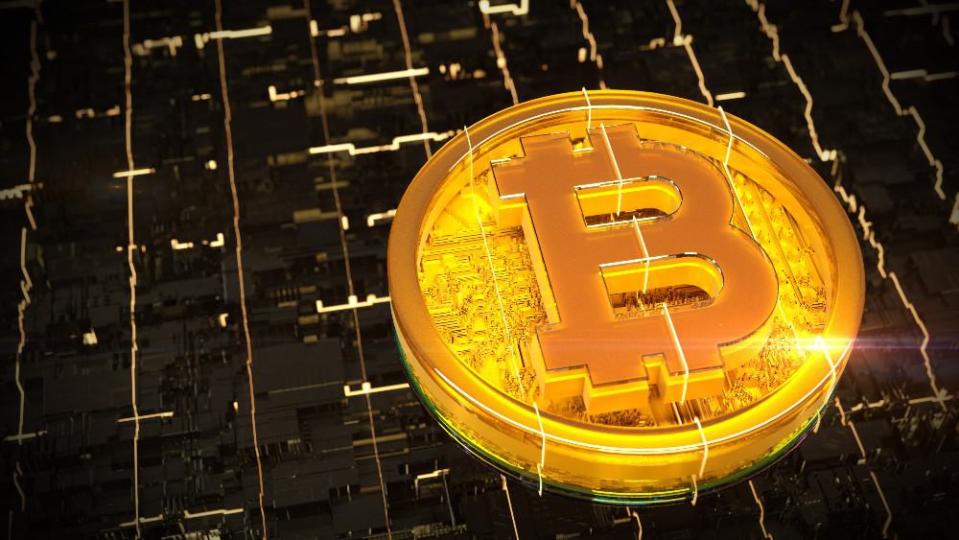If Bitcoin Is the Future, This ETF Is a Screaming Buy

On May 19, Bitcoin fell 30%, breaching its $40,000 support. Many thought that the bubble was finally about to burst, but then BTC returned to the $49,000 mark. Is it true that the whole crypto-mania is a bubble and it will burst, as it did in 2018? Or does BTC have a future investment value? Both statements are true. Read further to understand the future of Bitcoin.
What is Bitcoin?
Bitcoin is digital gold created for use as a mode of payment and a store of value. Gold and Bitcoin are similar in many ways:
Both gold and BTC are mined, and their mining hurts the environment. However, BTC mining can become eco-friendly with renewable energy.
Both are alternatives to fiat currency.
Both have a limited supply. Only 21 million BTCs can be mined. As more people mine it, the more difficult it becomes to acquire BTC. This is called BTC halving, where the block rewards fall 50% after 210,000 blocks are mined, which takes roughly four years. BTC mining has gone through three halvings, reducing the reward to 6.5 BTC per block as against 50 BTC per block at the start. Moreover, the computing power needed to mine a block is increasing.
There is also another similarity of the pickaxe strategy. There is a saying, “You can mine for gold or you can sell pickaxes.” During the gold rush, many pickaxe sellers made money while only some miners made money.
Despite these similarities to gold, Bitcoin suffers from high volatility as it is not regulated. Moreover, BTC has not yet gained wide acceptance as a means of exchange. These two were the major reasons for the previous crypto fallouts in 2014 and 2018.
The current Bitcoin wave is different
However, the current Bitcoin wave is different. Unlike 2018, many hedge fund managers have come to accept BTC. Microsoft and AT&T accept payments in BTC. Tesla and Square have invested their money in BTC.
Moreover, it has become easier for retail investors to obtain exposure to BTC. There are many online trading platforms and crypto exchanges that facilitate cashing out BTC in fiat currency and other cryptocurrencies. Canada introduced North America’s first BTC ETF in February, the Purpose Bitcoin CAD ETF (TSX:BTCC.B). The ETF buys and stores BTC and give investors units for less than $7 per unit that equals 0.00017203 BTC.
The ETF trades on the TSX like all other stocks, and you can buy it through the Tax-Free Savings Account (TFSA). It moves alongside the BTC price. While BTC fell 30% in the last 30 days, the BCC.B ETF fell 37%. This raises a big question.
If the current Bitcoin frenzy is different from the previous ones that resulted in fallouts, why did BTC fall 30%? The answer is Elon Musk.
Bitcoin’s 30% dip is an Elon Musk correction
In February, Elon Musk said that Tesla is considering accepting BTC as a payment option. This pushed BTC price up as much as 80%. In May, Tesla backed out from BTC payments due to environmental concerns. Hence, the 30% dip in BTC price is the Elon Musk correction. All other growth factors remain unchanged. Unlike Dogecoin, which is rising purely on the back of Elon Musk fandom, BTC has backing from many hedge fund managers, corporations, and even the stock exchange.
Final thoughts
Like every new revolution, the crypto revolution will take time. But it has got the regulators, corporates, and investors thinking of a crypto alternative. There are many altcoins, but BTC has the lead. Even if there is a bubble, crypto will keep emerging after two to three years. In every bubble, BTC will stand to win because of its first-mover advantage.
I would suggest investing just 1% of your portfolio in the BTC ETF for the long term. Because if crypto is the future, your 1% could grow to unprecedented levels. And if it is a bubble, 1% won’t harm your portfolio significantly.
The post If Bitcoin Is the Future, This ETF Is a Screaming Buy appeared first on The Motley Fool Canada.
Check out this free list of cheap growth stocks to hedge your portfolio from Bitcoin's downside.
Just Released! 5 Stocks Under $49 (FREE REPORT)
Motley Fool Canada's market-beating team has just released a brand-new FREE report revealing 5 "dirt cheap" stocks that you can buy today for under $49 a share.
Our team thinks these 5 stocks are critically undervalued, but more importantly, could potentially make Canadian investors who act quickly a fortune.
Don't miss out! Simply click the link below to grab your free copy and discover all 5 of these stocks now.
Claim your FREE 5-stock report now!
More reading
Canadian Investors: Here Are 2 of the Best Stocks to Buy Today
If Virtual Health Care Is the Future, Then This TSX Stock Is a Screaming Buy
Teresa Kersten, an employee of LinkedIn, a Microsoft subsidiary, is a member of The Motley Fool’s board of directors. Fool contributor Puja Tayal has no position in any of the stocks mentioned. David Gardner owns shares of Tesla. Tom Gardner owns shares of Square and Tesla. The Motley Fool owns shares of and recommends Microsoft, Square, and Tesla.
2021

 Yahoo Finance
Yahoo Finance 